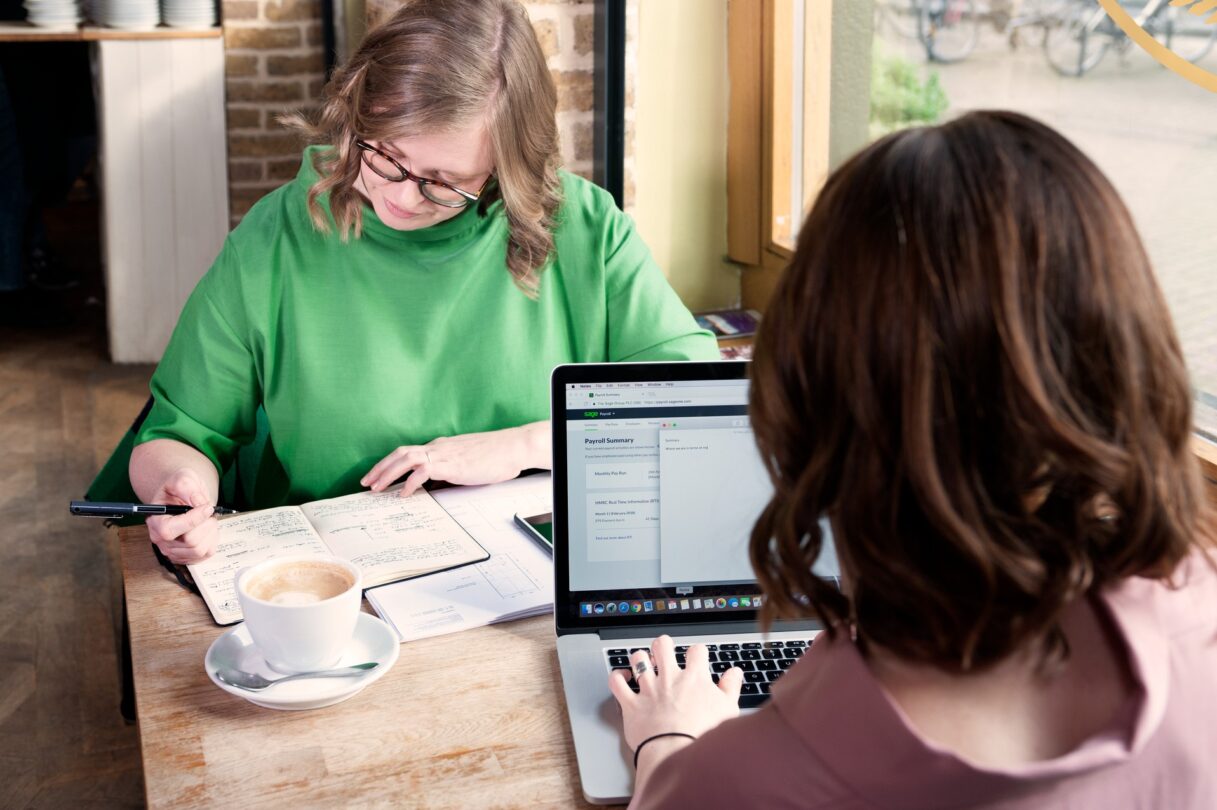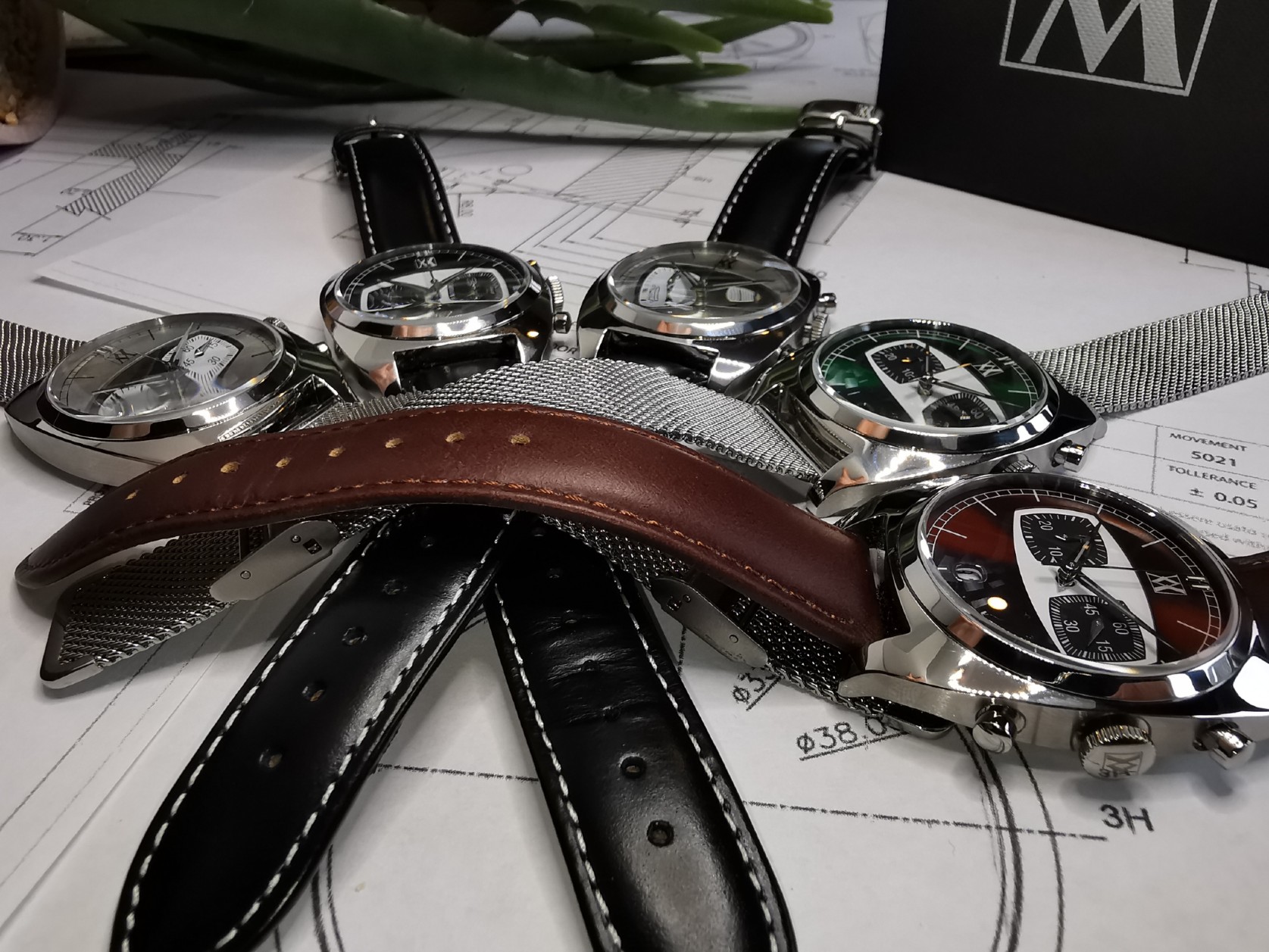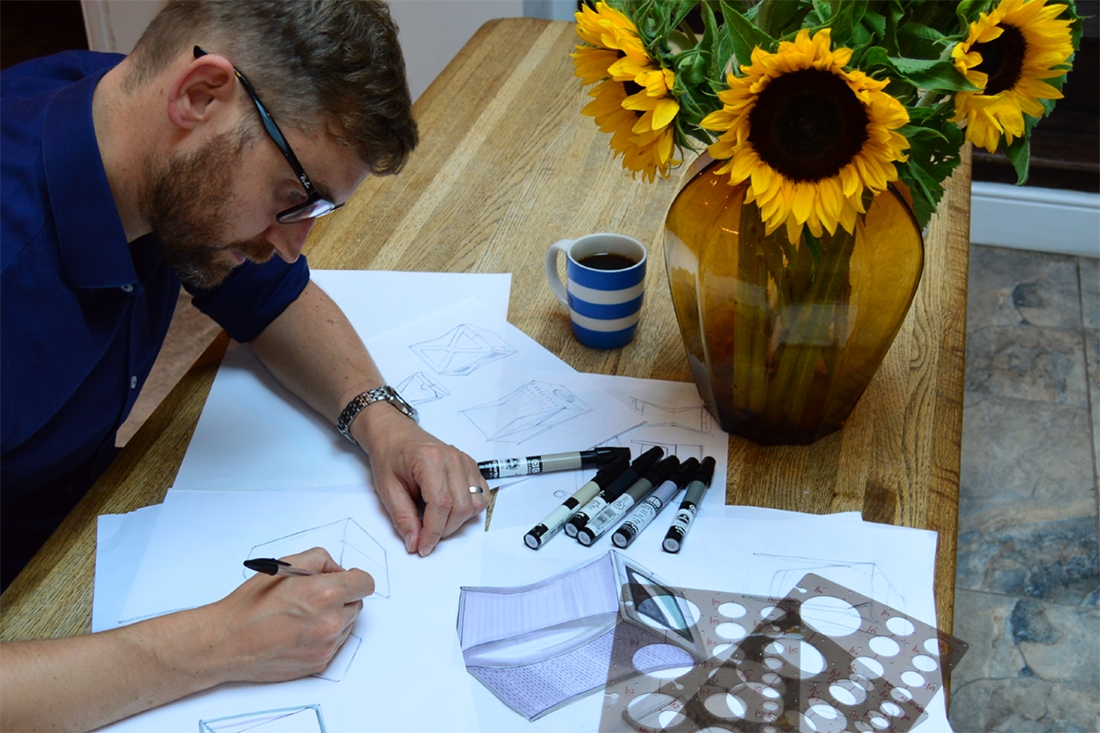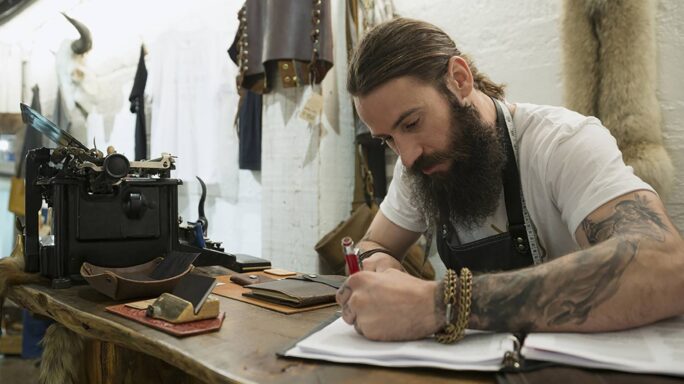Growth & Customers
Secret diary of a sole trader: Overcoming challenges during the 1st year in business
As factories and shops closed, starting a business as a sole trader in 2020 was challenging. Here, four business owners share their stories.

As factories closed, shops shuttered and deliveries went down, it’s safe to say that starting a business in 2020 was a trial by fire.
Four sole traders who bit the bullet, from Dyson designers to watchmakers, reveal how they jumped their biggest hurdles – and how aspiring business owners can do the same.
In January 2020, Richard Hayes gave notice working at an insurance brokers to start his own watch company.
It was a gift of a Fossil sports watch, whose inner workings were exposed, that percolated his interest in developing his own timepiece: a British brand with a high-quality quartz movement.
Just two months later, the first of a series of lockdowns began.
From March onwards, both the pandemic and Brexit caused extraordinary and significant effects to global trade, from the closing of factories to myriad delivery delays and worldwide investor nervousness.
It required even the most experienced of owners to swiftly pivot, tapping emergency funds or furloughing employees.
For many of the record number of small business owners who set up shop in 2020 (according to the Federation for Small Businesses, an extra 113,000 last year alone), it felt like they would never get off the ground.
Hayes had a 3D printed prototype for his watches, but the temporary closure of the factory that made the quartz movement meant his very first order was delayed by months.
Simon Cornelius incorporated his product design company Cornelius Creative in March 2020 – only to have his burgeoning client base slashed.
“Contracts that we had lined up were all cancelled, and we had zero income for almost two months,” he says.
But among the grey clouds, there were shards of bright sunlight.
New small business owners have described being pleasantly surprised by a number of upsides to 2020, from the raft of additional funding available to an increase in online shopping, as well as support for independent businesses bolstered by social media.
Perhaps the most important upside they describe is the extra space and time they had been gifted to concentrate on the bare bones of their business.
After all, every company is borne out of a passion or to solve a problem, from invention to photography.
Cutting though the noise to hone in on what they had to offer was one of the least tangible but most important lessons of 2020.
In this article, four small business owners who decided to take the plunge in 2020 describe how they overcame their biggest challenges, as well as sharing some unexpected silver linings.

Hannah Isabella Jayne Cummings launched her embroidery business in 2020
Sole trader hurdle: A hands-off approach
With six years under her belt working for renowned bridal couturier Phillipa Lepley, Hannah Isabella Jayne Cummings felt there was an untapped market within the wedding industry – for an artisanal embroidery service to enhance existing dresses.
Handing in her notice in November 2019, she left her role officially in February 2020 to found Isabella Jayne Embroidery, just one month before lockdown rules prevented large gatherings in the UK.
Intending to rely on the upcoming summer to kickstart her business, Cummings had to adjust to a new reality that implicated her business in nearly every way, from marketing to supply.
“I had no photographs of brides wearing my designs at their wedding, which definitely made content harder for social media,” she says.
As well as the lack of a business opportunity, sourcing fabrics online without being able to feel their quality “became a bit of a gamble”, she adds.
Lack of physical presence was an also an issue for product designer Simon Cornelius, who founded Cornelius Creative to offer industrial design and marketing services to product manufacturers.
Now boasting clients that include Dyson and Renishaw, the lack of networking opportunities with potential clients proved problematic in the company’s nascent months.
“Going to trade events and being able to speak to other companies is very important for building our business,” explains Cornelius.
“Advertising wasn’t an option for us to begin with and to save costs we built our website ourselves during evenings after work, so it took a while to launch.
“Networking was the best opportunity for us to build the business, but it just wasn’t possible.”
The fixes
Unfortunately, there was no one easy solution behind the raft of lockdowns that studded 2020.
“We attended virtual networking events, but in all honestly we didn’t get a huge amount of value from them,” admits Cornelius.
Instead, Cornelius and his wife, a co-owner of the business, used the time to define their unique selling point (USP), secure outside funding and look into temporary relief from other bills.
“We wrote a business plan, set our short and long-term goals, and made sure we really understood our value proposition,” said Cornelius.
“We also took advantage of financial help available to businesses. We received a grant from South East Creatives (SECCADS), which helped us buy a laptop and a 3D printer, which enabled us to offer prototyping services.
“We took part in the Future Forward programme from Locate in Kent, which gave us fantastic guidance into running a business.
“We were also able to take a short mortgage payment holiday, which perhaps wouldn’t have been available in other years.”
Cummings decided to use the time to get to back to the fundamentals of her business.
“I tried to view the lack of weddings as an opportunity to really get stuck in with my creative work behind the scenes,” she says.
“I thought I would struggle to keep momentum with designing, but actually I feel the slower pace of the year has given me space to get more creative.”

Simon Wright set up an automotive wall art company
Sole trader hurdle: Getting online
Building a website and starting to advertise online is something nearly every new business owner will need to do, regardless of their internet nous.
Cummings decided to build her own website. But she found it hard to bring the same level of aestheticism to her site as she did to her designs.
“I had absolutely no idea how to do this and although I was told that platforms like Squarespace were super easy, I found it quite difficult… probably because I was fussy and wanted it to look a certain way,” she says.
Different businesses will always have different priorities on where to allocate spend.
For Simon Wright, who set up the automotive wall art company Limited100 in March 2020, a good-looking website was non-negotiable.
His company’s USP is its limited runs of 100 prints per image. But to encourage a customer to invest more in this type of print, he needed a flashy and responsive site.
Wright hired developers for his Shopify website, which is now “performing fast, responsively and is really giving customers that ‘wow’ experience”, he says.
One of the biggest challenges Hayes faced with Wishmoor Watches was Facebook advertising.
With the average Facebook user clicking on an average of 2.5 ads a day, it’s an easy and effective way to advertise – but there are pitfalls when spending with one of the biggest companies in the world.
After creating a business account and posting his first advert, he ran into challenges.
“All seemed to be going great until I was suddenly restricted from advertising across the Facebook platform, including Instagram,” says Hayes.
“All they would tell me was that I have gone against one of their policies (they wouldn’t tell me which one or which part of the policy I had gone against).”
After losing his appeal, Hayes still has little idea on what went wrong.
The fixes
There will always be advocates for either side of creating online presence. Should you learn to do it yourself, or will getting an expert pay off in the long run?
Cummings decided to spend more on core elements of her business such as fabric and design her own website.
She suggests “trial and error, as well as a lot of YouTube tutorials” for others looking to save costs.
“I still found myself with a website that I was proud of and was pleased I’d managed to do it alone,” she adds.
Wright, meanwhile, decided to go to the professionals.
“I sourced the right experts who have key skills in areas such as email marketing automation, HTML5, Google Tag Manager and general graphic design,” he says.
And if there are stumbling blocks with some forms of online advertising, it doesn’t hurt to see what else is out there.
“I’ve gone over to Google Ads and they are so helpful,” says Hayes.
“I’ve also spoken with some of the YouTube channels that review watches I had subscribed to, and have been able to get six video reviews up online with them which have all been really well received by the online community.”
Currently experimenting with YouTube Shorts, he recommends thinking beyond Facebook/Instagram as your first port of call.

Richard Hayes’s business, Wishmoor Watches, was inspired by a Fossil sports watch gift
Sole trader hurdle: Supply chain headaches
By May 2020, Hayes was receiving 3D printed prototypes to check the size of his new watch and samples of straps to pick from.
Once these were finalised, the order was placed for the first production run of the Pioneer Chronograph.
“We were expecting to have these by about August but due to the pandemic and the manufacturers of the quartz movements, Ronda, having to close down temporarily, this delayed the watches being completed and they came through in December 2020 instead,” he says.
“In a way, this was a real challenge to the business as I had to re-evaluate my plans for it as I was hoping to be up and running was before the end of the year and this meant delaying advertising and getting the brand, Wishmoor Watches, out there in the public domain.
New restrictions deriving from Brexit also proved tricky to navigate for Simon Wright.
“Delivery into the European Union provided to be my greatest challenge this year due to the perfect storm of Brexit and the pandemic, with shipping taking as much as a month to get to Germany, for example,” he says.
The fixes
Fixes for delivery delays have been similar: wait, pray, and remember to update your customs information.
Wright says: “Thankfully, delivery performance is back to normal, and provided that I include the correct customs information such as the HS Code, carriers such as DPD, TNT and UPS are performing exceptionally now and have recently been able to deliver from our headquarters in the UK to countries such as Italy in less than one week.”
For new businesses, it may also be useful to check in with your providers regularly, to ensure you are kept front of mind for any updates to regularly scheduled programming.
Hayes says: “The global pandemic had caused many the factories to close down, which brought delays in getting the quartz movements manufactured.
But we kept going and, with updates from the manufactures involved on almost a weekly basis, we got there in the end.”

Simon Cornelius incorporated his product design company, Cornelius Creative, in March 2020
Was it all worth it?
From manufacturers scrambling to pandemic restrictions, 2020 was not a place for the faint-hearted. Yet, none of these traders regret starting their own business last year.
“It was the ultimate ‘stress test’,” says Wright.
Hayes has some top tips for new business owners.
He says: “Do your research and then research that research. Learn how a company is set up, what tax(es) will you be liable for, how are you going to get your product made.
“I must have spoken with 10 or 12 manufactures before settling on the one I currently use.”
For Cummings, a year that was up and down for everyone took the strain off of her own business.
She says: “Had it been a normal year, I know I would have put more pressure on myself to have things going well pretty quickly (which of course is unrealistic, these things take time).
“It’s been hard but so exciting and I would do it all over again.”
The extra time afforded has been vital for new businesses, agrees Cornelius. “We had breathing space at the beginning to really identify what we wanted our brand to be and how we could add value to clients.
“Now we have a story to tell – launching a business in a pandemic. Not only did the business survive, it’s now thriving.”








Ask the author a question or share your advice